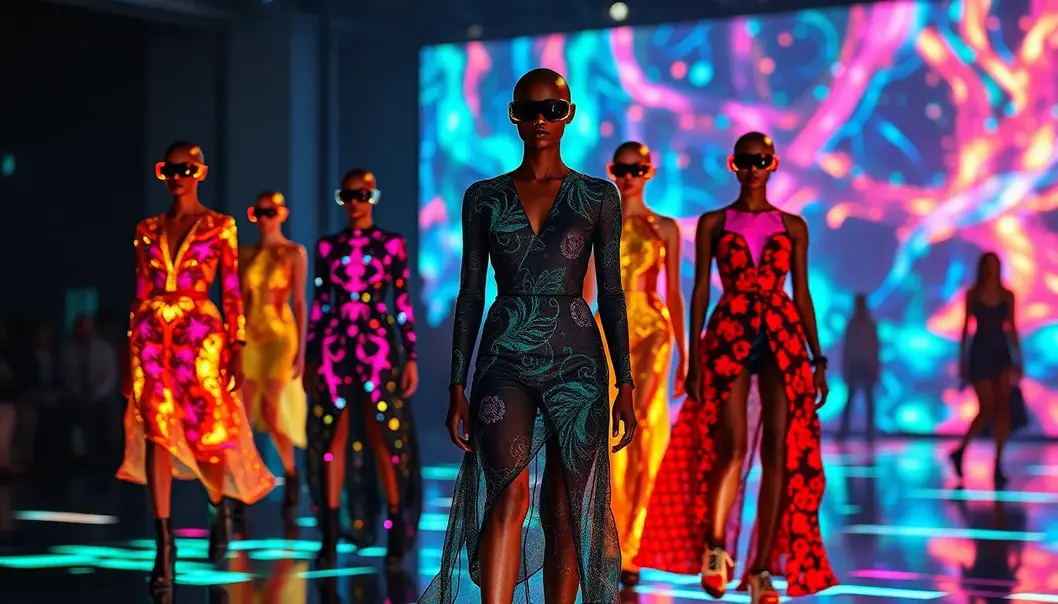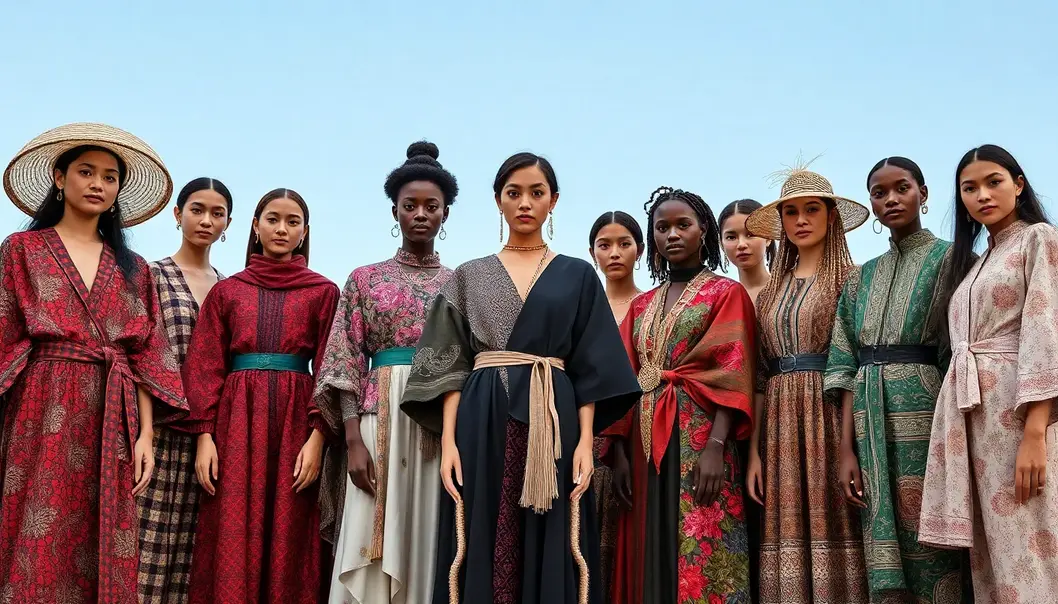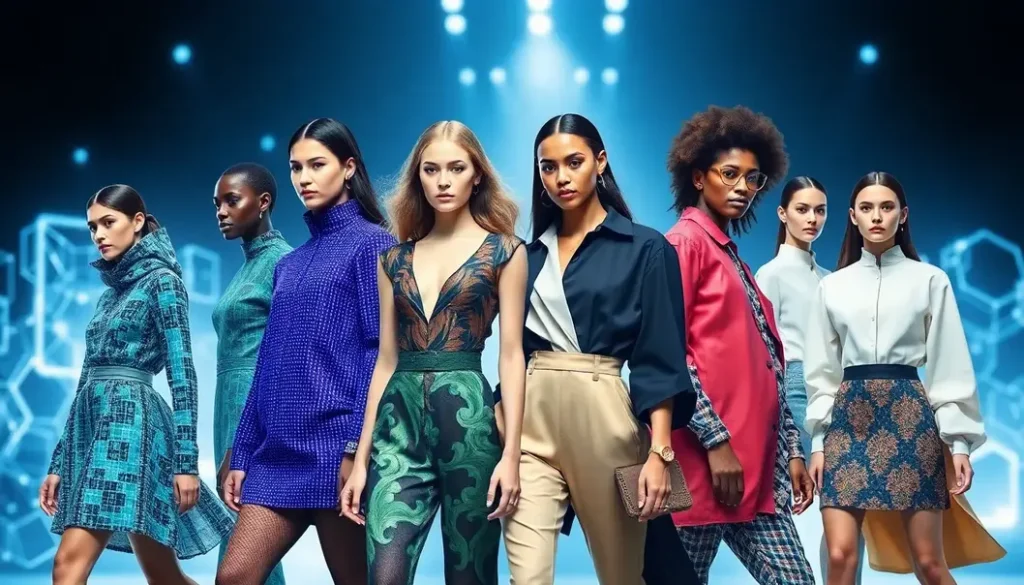As we march towards 2025, fashion continues to evolve, drawing inspiration from technology, sustainability, and cultural diversity. With the world becoming increasingly interconnected, trends are emerging that redefine style with a focus on individuality and ecological consciousness. This exploration dives into these groundbreaking movements, offering fashion lovers and trend analysts a glimpse into what the future holds. From digital fabrications to eco-conscious wearables, 2025 promises a landscape where tradition meets innovation. Prepare to discover the elements forging the fashion of tomorrow, capturing the spirit of a generation that values purpose and expression in every stitch and silhouette.
Tech-Driven Textiles and Wearables

As we advance towards 2025, the intersection of technology and fashion becomes increasingly harmonious, transforming how we perceive and interact with clothing. The era of tech-driven textiles has arrived, promising innovations that redefine style and functionality. Central to this transformation are smart fabrics. These materials, embedded with digital components, offer capabilities like temperature regulation, activity tracking, and even mood enhancement. Imagine workout gear that monitors your heart rate or office attire that adjusts its warmth based on ambient temperatures. Such innovations signal a future where clothing not only expresses personal style but also adapts to individual needs seamlessly.
Alongside smart fabrics, 3D printing in fashion heralds a new age of design possibilities. This technology enables designers to create intricate patterns and structures unachievable by traditional means. 3D printed clothing allows for customized fit and form, catering to any body type without the constraints of standard sizing. The appeal is undeniable for consumers seeking personalized experiences or those with unique fashion needs.
Augmented reality (AR) also plays a significant role in fashion’s digital transformation, particularly in retail experiences. Virtual dressing rooms leverage AR to allow customers to ‘try on’ outfits digitally before purchasing. This innovation enhances the shopping experience, making it both immersive and convenient. Additionally, AR bridges the gap between physical and online shopping, reducing return rates by ensuring better-fitting selections.
The implications of these technologies extend across the fashion industry. Designers are exploring new creative territories; the constraints of fabric and form are dissolving. Fashion houses are investing in tech collaborations to stay ahead in a competitive market, recognizing the value in embracing digital innovation.
For consumers, these advancements translate to greater accessibility, personalization, and interaction with brands. As lines blur between daily wear and digital interfaces, brands pioneering this tech-fashion integration set the stage for a future where garments do more than just clothe. They inspire, protect, and connect.
Brands at the forefront of this movement demonstrate how technology and fashion can coexist brilliantly. They lead by example, showcasing how garments can be smarter, more sustainable, and culturally conscious entities. As this chapter sets the stage, our journey continues to explore how sustainability and cultural diversity are influencing fashion’s evolution, reflecting a broader commitment to a more inclusive industry.
Sustainable and Cultural Fashion Movements

As the planet faces growing environmental concerns, fashion in 2025 is steering towards a sustainable and culturally conscious future. The industry is witnessing a significant shift in priorities, focusing on eco-friendly materials and slow fashion. Designers are increasingly tapping into the potential of biodegradable textiles, which are crafted to minimize environmental impact. These materials break down naturally, reducing textile waste significantly.
Consumers are driving demand for garments that speak to both longevity and ecological responsibility. The slow fashion movement, characterized by its ethos of quality over quantity, is gaining traction. It challenges the traditional fashion calendar, advocating for fewer, well-made pieces that last. This approach not only helps in saving resources but also strengthens the bond between wearer and garment, as each piece tells a story of craftsmanship and conscious choice.
Cultural diversity in fashion is another powerful force shaping 2025 trends. Designers draw inspiration from global traditions, celebrating diverse heritages through contemporary design. Collections often incorporate elements from various cultures, offering a rich tapestry that reflects and respects the origins of these inspirations. This trend promotes a more inclusive industry, where global influences are embraced, and cultural appreciation takes center stage.
In the realm of sustainable practices, many designers seek out indigenous artisans whose traditional techniques merge seamlessly with modern design. This collaboration not only ensures the survival of age-old crafts but also provides economic support to communities. Such partnerships exemplify a symbiotic relationship where both contemporary fashion and cultural craftsmanship can thrive.
Moreover, the celebration of cultural textiles extends beyond aesthetics; it encompasses a deeper understanding of heritage and identity. Fashion pieces serve as a canvas, narrating stories of cultural roots while offering fresh interpretations that resonate with today’s fashion sensibilities.
2025 is poised to redefine the fashion landscape, emphasizing sustainability and cultural richness. These trends signify a movement toward thoughtful consumption and meaningful design, ensuring that fashion remains an avenue for both self-expression and environmental stewardship.
Final words
The fashion trends of 2025 highlight a pivotal shift towards integrating technology and sustainability with respect to cultural identity. As designers innovate with smart textiles and socially responsible practices, fashion lovers can expect a future where style and conscience coexist. These trends mark not just a momentary change, but a lasting impact on how fashion interacts with our lives and the world.
Explore the cutting-edge of fashion with our exclusive trend analysis services, perfect for designers and industry innovators.
Learn more: https://www.trendanalyzer.com/services
About us
TrendAnalyzer offers comprehensive trend analysis and forecasting services tailored for fashion industry professionals seeking to stay ahead in a constantly evolving landscape. Our expert team provides insights into upcoming fashion movements, technology integration, and sustainability, helping your brand anticipate and lead in innovative design.
